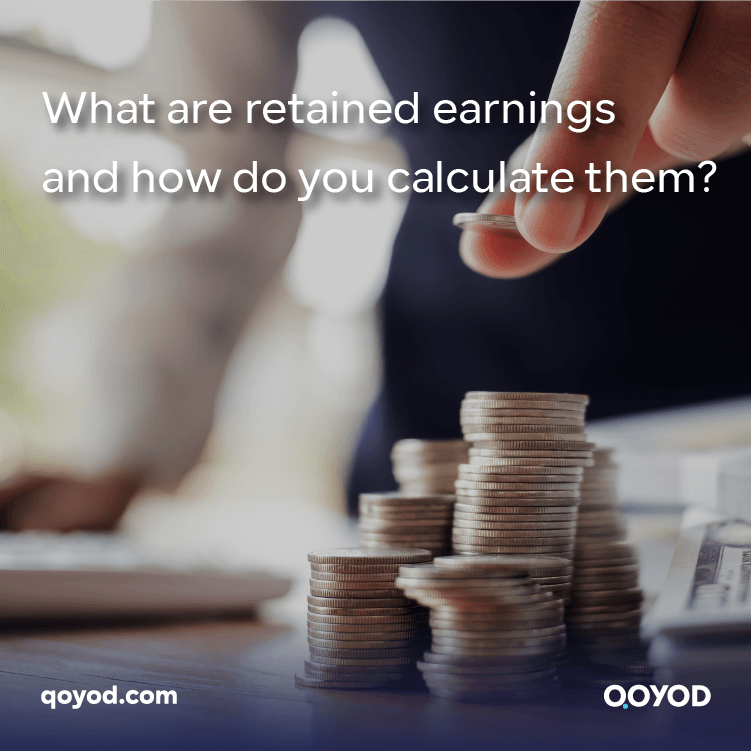Retained earnings are those profits that grow steadily and accumulate without being noticed by many people. Some may wonder what these retained earnings are. Well, they are treasures hidden in the core of businesses, waiting to be discovered and used wisely with wise patience. Furthermore, how can it be calculated?
For a moment, let’s imagine that the business is an agricultural field full of glamorous plants and a variety of fruits. The retained earnings, then, are those ripe fruits that are ready to be picked but have not yet been harvested. It is important to note that calculating retained earnings requires innovative thinking and the capacity to see the future with present-focused eyes. In this article, we will learn the simplest method of calculating retained earnings because you will already be aware of what they are, so stick with us.
Retained earnings: what are they?
The part of a company’s profits that is retained for use in the future, such as funding new projects, paying off debt, building financial reserves, or investing in growth and expansion, rather than being distributed to shareholders in the form of cash dividends or dividends.
What are the benefits of retained earnings?
Retained earnings are important financial elements for companies, as they represent a strong source of financing for future commercial activities and investments and are characterized by a set of advantages that make them a preferred choice for companies when looking for internal financing, the most important of which are the following:
Availability of an internal funding source
It is a financial source available to the company without the need to issue any bonds or loan applications from third parties; this means that the company can use these profits to finance new projects, expand the business, or even fund research and development without having to pay interest or additional costs.
Avoid borrowing costs.
When a firm uses its retained earnings for financing, it avoids having to borrow money from banks or other lenders and saves money on interest and borrowing costs, which increases the company’s net profit margin.
Benefit from a return on investment ROI
Instead of distributing all the profits to shareholders, the company can use that type of profit to invest in projects or assets that generate a future return, meaning that the company can benefit from the return on inward investment, which leads to an increase in the value of the company in the long run and more growth and financial stability.
Debt repayment and confidence
By using retained earnings to repay outstanding debts, the company can improve its capital structure, reduce the level of outstanding debt, and thus become more financially independent, enhancing investors and creditors’ confidence in its ability to meet its financial obligations.
How are retained earnings calculated?
This type of profit is calculated by grouping several important elements in the company’s financial statements. I will explain to you here the method, which is as follows:
Earnings previously retained at the beginning of the accounting period (carry-forward earnings)
This amount is the profits accumulated from previous accounting periods that have not yet been distributed, as this amount can be found in the statement of retained earnings in the company’s previous financial statements.
(Net Profit or Loss) Net Income
Net income is computed by deducting all costs from the total income for the accounting period. If the business turns a profit during that time, it gets added to retained earnings; if it loses money, it gets subtracted from retained earnings.
Cash and share dividends
If the company distributes dividends to shareholders in cash form or distributes additional shares, these distributions are deducted from retained earnings, as cash dividends are the amounts paid to shareholders as cash dividends, and dividends are the additional shares distributed to shareholders.
In brief
Based on the above, retained earnings can be calculated using the following formula:
Total Retained Earnings = carry-forward earnings + net profit or loss minus cash dividends and dividends.
Retained earnings-related factors
One of the fundamental components of a company’s finances is retained earnings, which are crucial in boosting the organization’s ability to raise capital and make investments. It is important to note that a number of factors, such as the following, can influence the amount and distribution of retained earnings within a company:
Debt Management
Debt management plays a role in determining the size of a company’s retained profits, and if a company holds large debts and pays high interest on these debts, it is likely to have the least ability to accumulate retained earnings because part of the profits are used to pay off debts and pay their interest.
On the other hand, if a company holds low debt and pays low interest, the size of retained profits may increase.
Policy for Dividends
One of the elements influencing retained earnings is the company’s dividend policy; if the policy is high, profits are given to shareholders to the detriment of retained profits, which are likely to be less.
Conversely, a business may have more retained earnings if it has a modest dividend policy.
Profitability
One of the key elements influencing a company’s retained profit size is profitability; a company that generates high and steady earnings is likely to have larger retained earnings.
As a result, the business may choose to pay out its profits to shareholders or utilize them to fund new initiatives.
Capital expenditure
Capital expenditures made by a company to expand or develop its business are a factor affecting retained earnings, and if the company invests in large capital projects, the retained earnings are likely to be used to finance these projects, resulting in a decrease in the size of retained earnings.
Conversely, if capital expenditures decrease, the amount of retained earnings may increase.
Retained earnings restrictions
Retained earnings are one of the most important financial elements for companies and reflect the undistributed part of the profits achieved. However, there are several restrictions and challenges facing companies in using and distributing this type of profit, the most important of which are the following:
Restricted cash flow
Although a company may make profits based on sales and retained earnings, they may have difficulty providing the cash flow needed to finance their activities, such as expanding the business and investing in new projects.
Companies must strike a balance between dividends and maintaining an adequate level of cash flow to ensure the sustainability of their business.
Changing market expectations
Retained earnings are restricted by market expectations and changing economic conditions. If the company experiences a decrease in demand for its products or a negative market outlook, it may be better to use retained profit to address these issues by reducing expenses or making investments in improving operations. In these situations, the distribution of retained profit may be delayed or decreased.
Opportunity costs
Opportunity costs are one of the important factors that companies must consider when making decisions about the use of retained earnings. When retained earnings are used to finance new projects or investments, there is a missing opportunity to use those funds in other ways, such as distributing additional dividends to shareholders or paying off debts.
To do so, companies have to assess opportunity costs and expected returns on investment before deciding whether to use retained earnings, or so-called retained earnings.
Conclusion
It must be remembered that retained earnings are not just numbers on a security but rather an opportunity for excellence, growth, and excellence, as it is a torch that lights the path of companies towards a promising and prosperous future, in addition to being a precious resource that may be the key to success and sustainability for companies, as it is an opportunity to achieve innovation and excellence and achieve greater profits and sustainable growth. In order for companies to be able to calculate them, they must adopt a proactive vision and use creative tools to explore new areas and achieve innovation, as this requires careful analysis of operations and identifying gaps and opportunities that have not yet been exploited. Do not forget that calculating this type of profit may also require a change in mindset and organizational culture, as it must encourage innovation and innovative thinking at all levels of the organization.
Retained earnings are a precious resource that may be the key to success and sustainability for companies, so use the Qoyod accounting program to exploit those profits and turn them from a buried treasure into a prosperous reality that lights up the future of your business. And do not forget that the program also offers all its customers: electronic invoice systems, as well as the point of sale system, stores, and customers.
Now that you know what retained earnings are and how to calculate them, try Qoyod now for free for 14 days and outperform your competitors.
Join our inspiring community! Subscribe to our LinkedIn page and Twitter to be the first to know about the latest articles and updates. An opportunity for learning and development in the world of accounting and finance. Don’t miss out, join us today!



